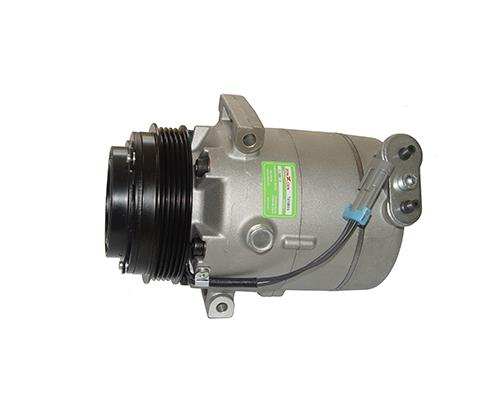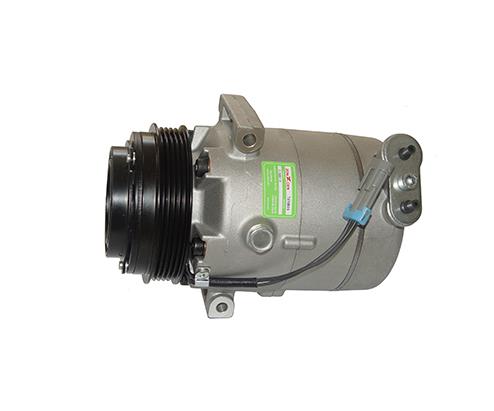
Troubleshooting High-Temperature Equipment Burnout in Air-Conditioning Compressors
Discover the common faults leading to high-temperature burnouts in air-conditioning compressors and learn preventive maintenance tips to ensure optimal performance and reliability. Expert insights and solutions provided.
ZHONGCHENG
In the realm of air-conditioning systems, compressors stand as the beating heart, tirelessly working to maintain optimal temperatures within various environments. However, even the most reliable compressors can encounter issues leading to high-temperature burnouts. Understanding the faults and their root causes is imperative for effective troubleshooting and prevention. In this comprehensive guide, we delve into the intricacies of air-conditioning compressor failures, exploring the common faults and their underlying reasons.
Introduction to Air-Conditioning Compressors
Air-conditioning compressors play a pivotal role in cooling systems, responsible for pressurizing refrigerant gases to enable heat exchange cycles. These mechanical marvels are engineered to withstand rigorous operational demands, yet they are not immune to malfunctions. High-temperature burnouts represent a critical failure mode that can disrupt system functionality and incur significant repair costs.
Symptoms of High-Temperature Burnout
Detecting the early signs of high-temperature burnout is crucial for preemptive maintenance and minimizing downtime. Several symptoms may indicate impending compressor failure, including:
1. Overheating: Excessive heat emanating from the compressor unit or surrounding components.
2. Reduced Cooling Capacity: Inadequate cooling output despite the system being operational.
3. Unusual Noises: Grinding, screeching, or banging sounds during compressor operation.
4. Frequent Cycling: The compressor rapidly turning on and off without effectively cooling the space.
5. Tripped Circuit Breakers: Electrical safety mechanisms activating due to increased power consumption or short circuits.
Identifying these warning signs allows technicians to intervene promptly, preventing catastrophic damage to the air-conditioning compressor.

Common Faults Leading to High-Temperature Burnout
1. Refrigerant Leakage
Air-conditioning compressors rely on a closed-loop refrigerant cycle to facilitate heat exchange. Refrigerant leaks compromise system efficiency and can escalate temperatures within the compressor. Common causes of refrigerant leakage include corroded fittings, damaged seals, or punctured refrigerant lines. Detecting and repairing leaks promptly is essential to prevent compressor burnout.
2. Electrical Overload
Electrical components within air-conditioning compressors are susceptible to overloading, leading to excessive heat generation. Causes of electrical overload include short circuits, voltage spikes, or inadequate wiring. Regular inspection of electrical connections and components is crucial for mitigating the risk of high-temperature burnout.
3. Inadequate Lubrication
Proper lubrication is vital for reducing friction and heat buildup within compressor mechanisms. Insufficient lubrication due to oil leaks, degraded lubricants, or blocked oil passages can accelerate wear and tear, ultimately resulting in high-temperature burnout. Implementing a routine maintenance schedule for lubrication checks and replenishment is essential for prolonging compressor lifespan.
4. Contaminant Accumulation
Foreign contaminants such as dirt, debris, or moisture can infiltrate air-conditioning compressors, impeding their operational efficiency. Accumulated contaminants hinder heat dissipation and increase internal temperatures, predisposing compressors to burnout. Regular cleaning and inspection of compressor components help mitigate the risk of contaminant-related failures.
5. Mechanical Fatigue
Continuous operation under varying loads subjects air-conditioning compressors to mechanical stress, potentially leading to component fatigue. Wear and tear of critical parts such as bearings, pistons, or valves can compromise compressor performance and escalate temperatures beyond safe limits. Periodic maintenance, including component inspections and replacements, is essential for mitigating mechanical failures.
Preventive Measures and Maintenance Practices
Effective preventive maintenance strategies are instrumental in preserving the integrity and functionality of air-conditioning compressors. Key practices include:
1. Regular Inspections: Conduct comprehensive visual and functional inspections of compressor units to identify potential faults or abnormalities.
2. Lubrication Management: Ensure proper lubrication levels and quality to minimize friction and heat generation within compressor mechanisms.
3. Refrigerant Leak Detection: Implement leak detection protocols to identify and repair refrigerant leaks promptly, preserving system efficiency.
4. Electrical System Checks: Verify the integrity of electrical connections, wiring, and components to prevent overload-induced failures.
5. Contaminant Control: Implement measures to minimize the ingress of contaminants into compressor units, such as installing filters or maintaining clean surroundings.
6. Temperature Monitoring: Employ temperature monitoring systems to detect abnormal temperature fluctuations within compressor units, enabling timely intervention.
7. Training and Education: Provide comprehensive training to maintenance personnel on proper compressor maintenance procedures and troubleshooting techniques.
By adhering to these preventive measures and maintenance practices, stakeholders can significantly reduce the likelihood of high-temperature burnouts in air-conditioning compressors, ensuring prolonged operational efficiency and system reliability.
Conclusion
Air-conditioning compressors serve as indispensable components of cooling systems, tasked with maintaining optimal temperatures in diverse environments. However, the occurrence of high-temperature burnouts poses a significant threat to compressor functionality and system performance. By understanding the common faults and underlying causes leading to compressor burnout, stakeholders can implement proactive maintenance strategies to mitigate risks and ensure uninterrupted operation. Through diligent inspection, lubrication management, and adherence to preventive maintenance practices, air-conditioning compressors can operate efficiently, providing reliable cooling solutions for various applications.
-
Air-conditioning compressor manufacturer: what is the reason for the burning of the air-conditioning compressor
 2021-04-22
2021-04-22
-
How to repair AC compressor of central air conditioner
 2021-04-22
2021-04-22
-
How to eliminate the phenomenon that the AC compressor does not work
 2021-04-22
2021-04-22






